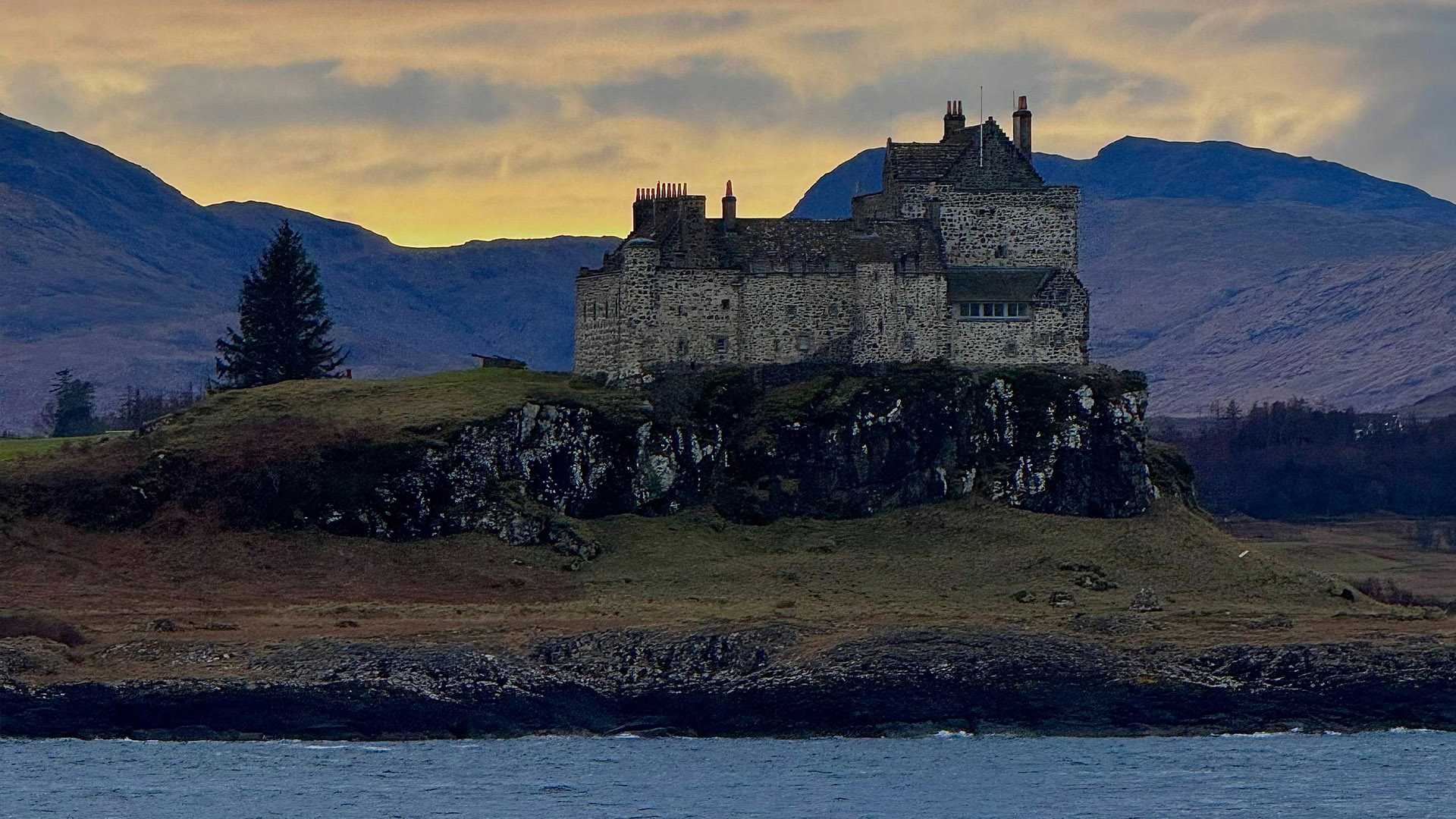
Duart Castle
Duart Castle stands proudly on a basalt headland, surveying the southern entrance to the Sound of Mull. Founded in the late 13th century by Clan Maclean, it has witnessed centuries of power plays, naval skirmishes, and Jacobite intrigue. With its stone keep and expansive curtain wall, it remains a defining symbol of clan dominance in Scotland’s western isles.
After a period of abandonment, Sir Fitzroy Maclean restored the structure in 1911. Today, visitors can explore the Great Hall, walk its battlements, and descend into vaulted dungeons. Exhibits tell the castle’s storied past, while sweeping sea views connect past and present in one of Mull’s most iconic historic sites.
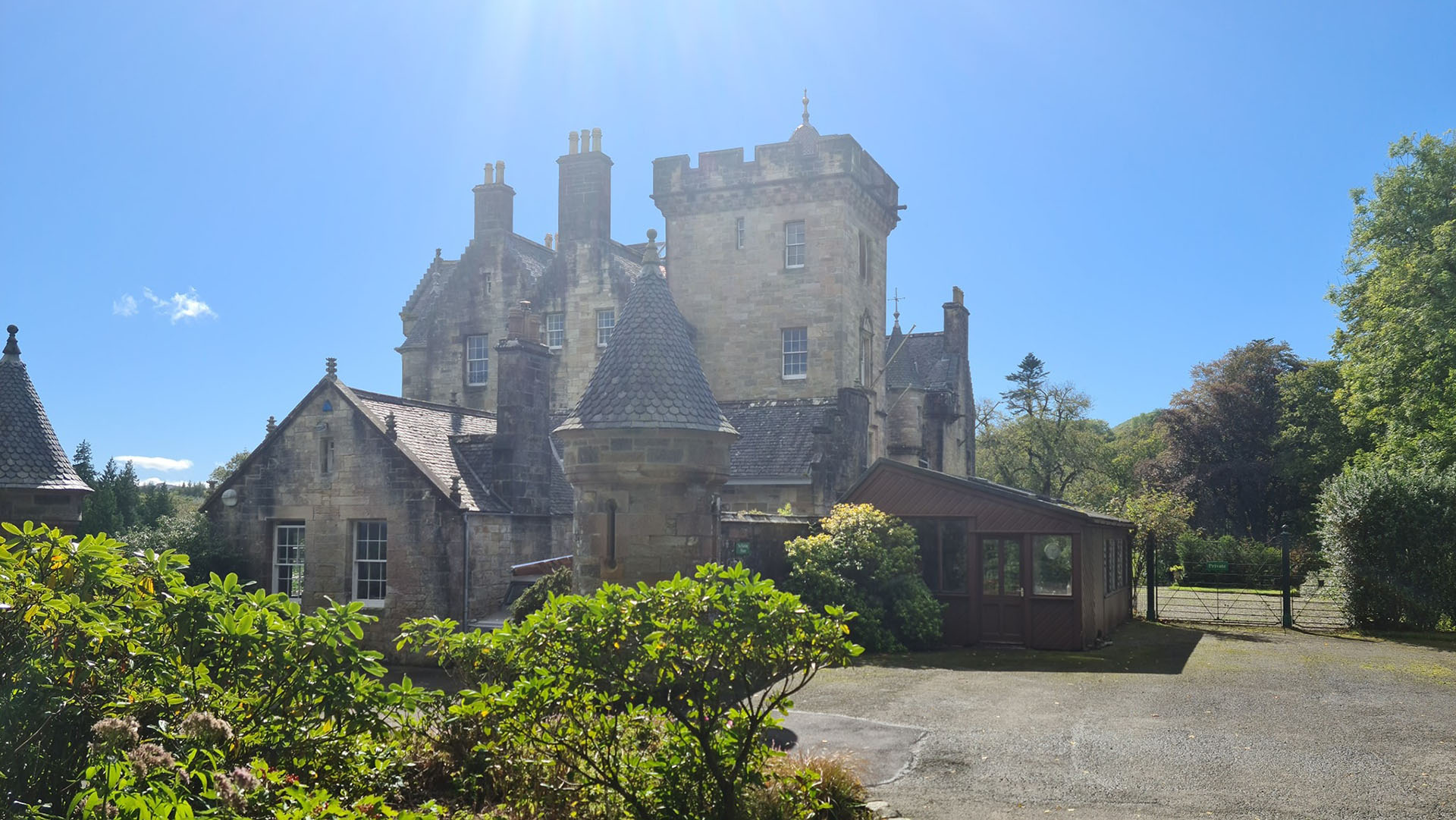
Torosay Castle
Built between 1856 and 1858, Torosay Castle exudes Victorian elegance with its Scottish Baronial architecture, designed by David Bryce for John Campbell. Its turreted profile, crow-stepped gables, and lush masonry reflect a revival of medieval grandeur, while the interiors boast refined details like plaster ceilings and carved wood paneling.
Although privately owned, Torosay’s terraced gardens open on select summer Sundays, treating visitors to a curated landscape of rhododendrons, magnolias, and sweeping views over Duart Bay. This tranquil haven blends botany and history, offering one of Mull’s most photogenic escapes.
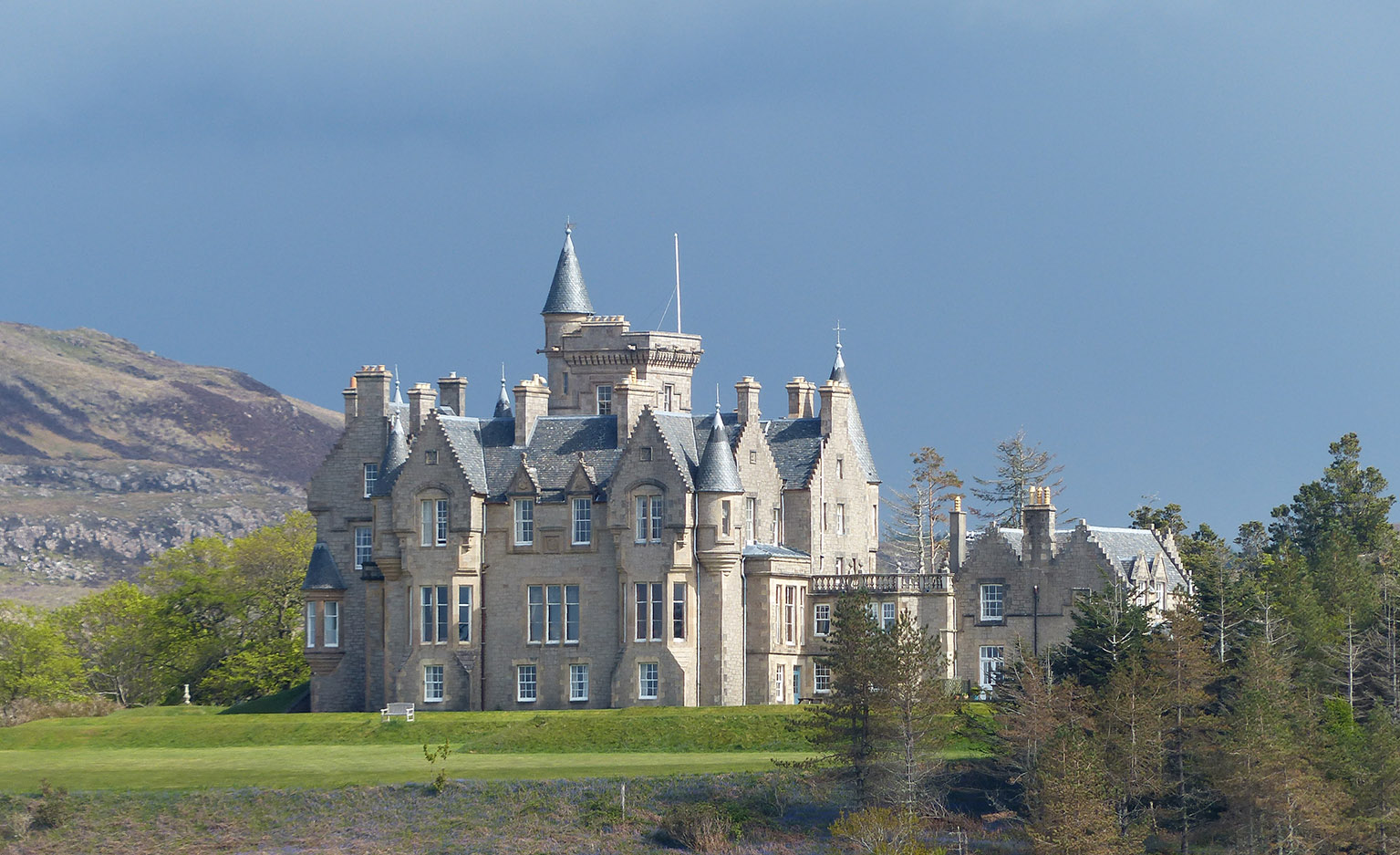
Kognos, CC BY-SA 4.0, via Wikimedia Commons
Glengorm Castle
Glengorm Castle rises from a rugged ridge five miles north of Tobermory, its bold red sandstone contrasting with the moorland surroundings. Completed in 1860, it served as a rural retreat for the Campbell lairds. Internally, the design merges romantic medieval motifs with Victorian creature comforts, including arched doorways and minstrels’ galleries.
Now home to holiday accommodation and a welcoming café, Glengorm’s expansive 5,000-acre estate features waymarked paths through woodland, coastline, and archaeological sites such as Dùn Ara Fort. Wildlife sightings—from deer to sea otters—add a natural dimension to the castle’s historic charm.
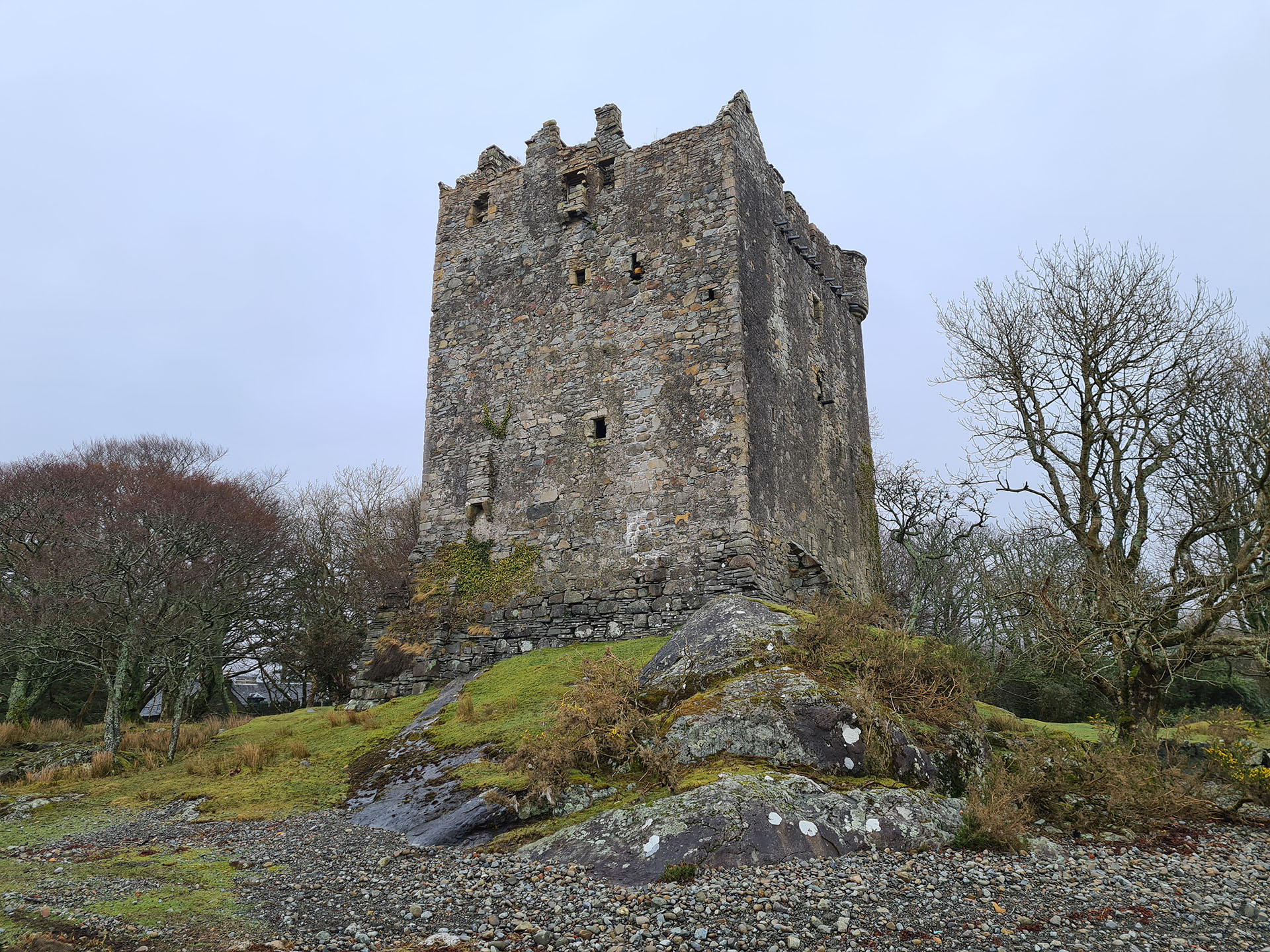
Moy Castle
Moy Castle occupies a serene setting at the head of Lochbuie, shaded by birch trees and overlooking calm waters. Built around 1490 by Hector Maclean of Lochbuie, its four-storey tower retains vaulted chambers, spiral staircases, and classic defensive features such as arrow slits and thick stone walls.
Though roofless since the 18th century, the structure is well preserved and easily accessible via a gentle woodland walk. The quiet ambience, coupled with seals often spotted offshore, makes Moy Castle a peaceful counterpoint to Mull’s grander fortresses.
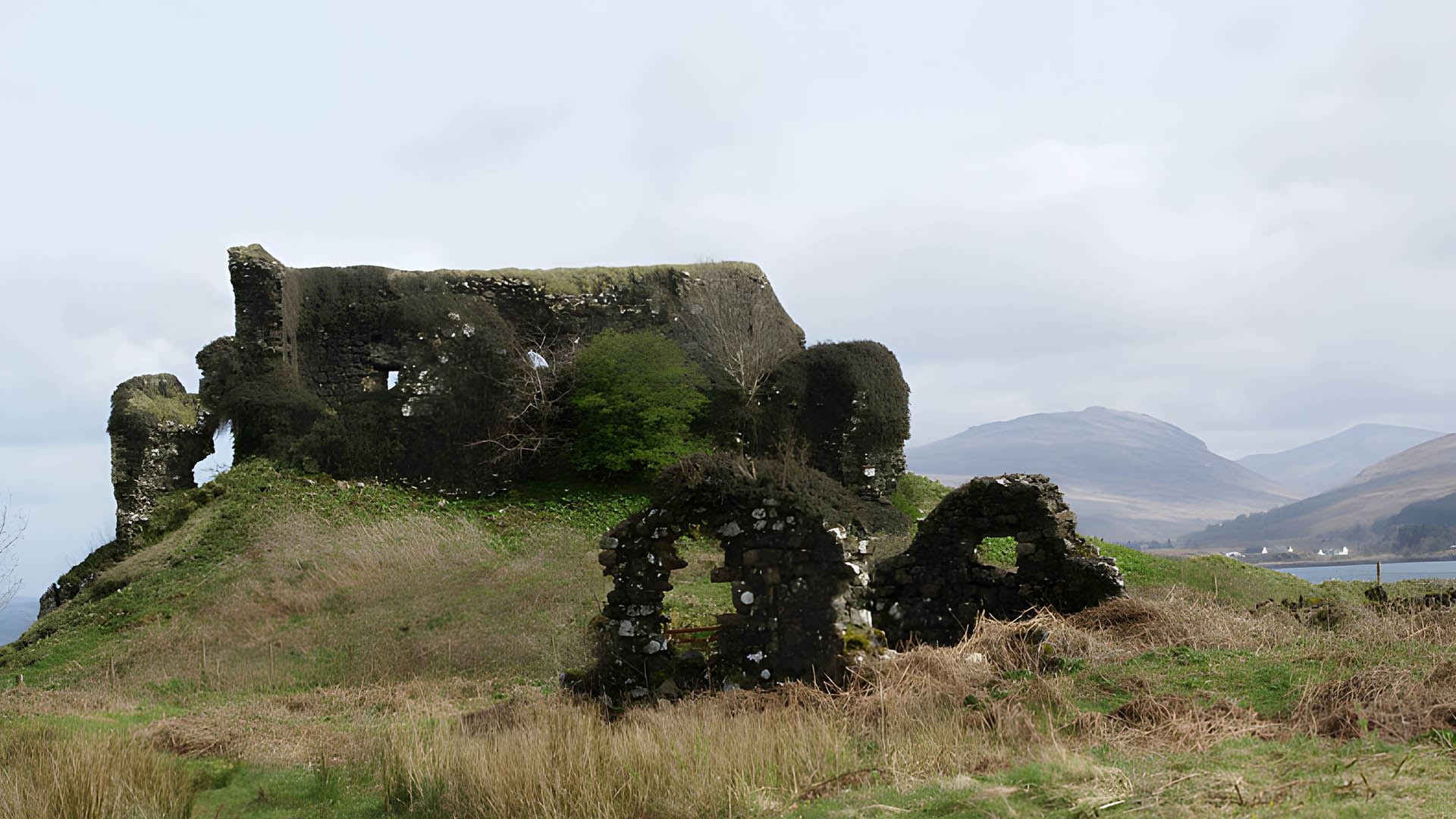
Otter, CC BY-SA 3.0, via Wikimedia Commons
Aros Castle
Aros Castle surveys Salen’s estuary from a hillside perch on Mull’s eastern edge. Built in the 13th century by the MacDougall clan, it later fell under the Lords of the Isles before passing to Clan Maclean. Though only fragments survive today, its location retains strategic allure and dramatic visual appeal.
Visitors can reach the site via a short footpath from Salen pier, rewarded with panoramic vistas across the Sound of Mull to the mainland. Aros remains a testament to medieval island politics and the ever-shifting allegiances that shaped Highland heritage.
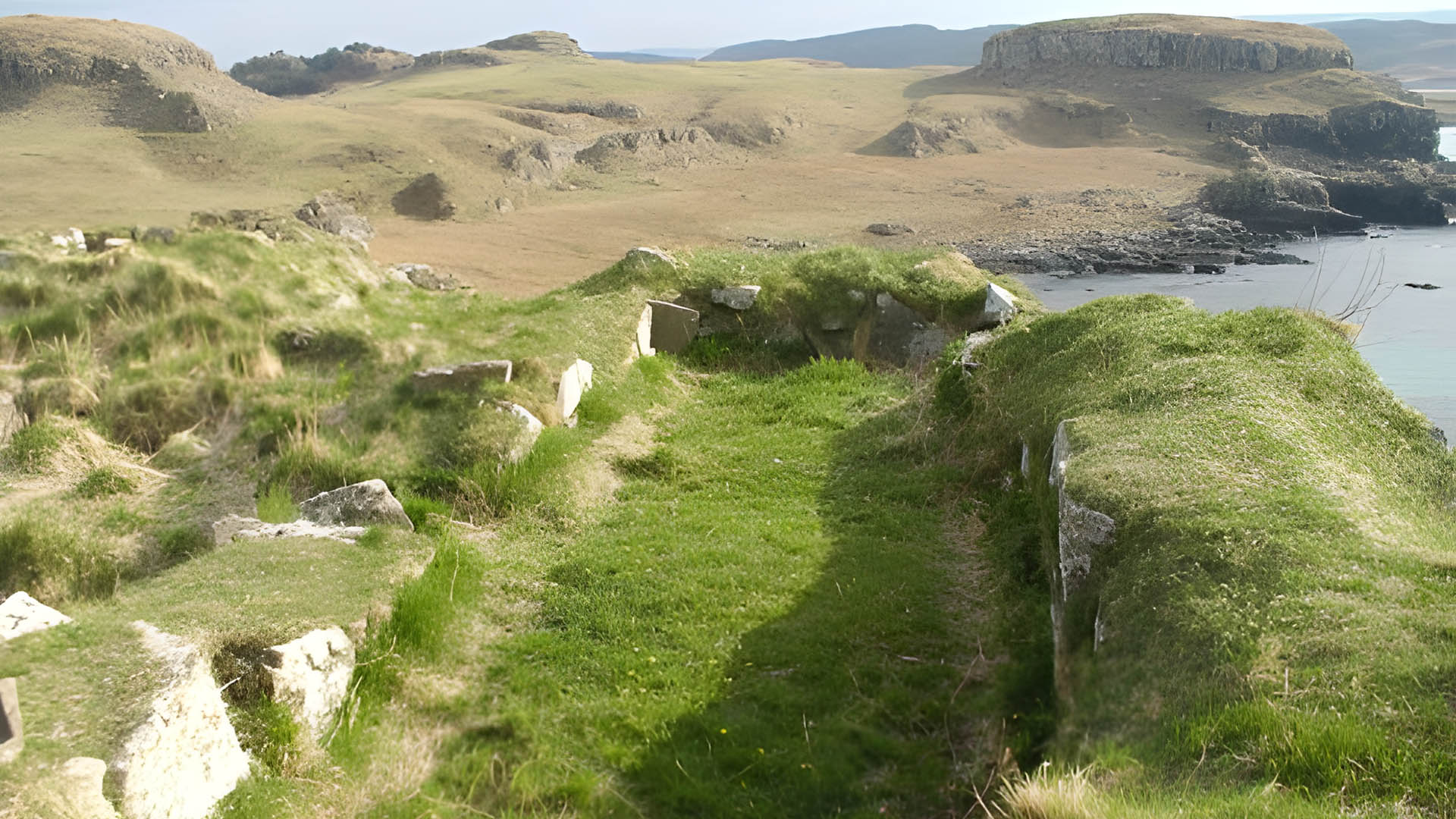
Ben Dallimore / Dun Ara Castle
Dùn Ara Castle
Dùn Ara Fort occupies a rocky knoll on the north shore of the Glengorm estate, steeped in early medieval significance. Its surviving earthworks and stone foundations date from the 6th to 8th centuries, reflecting Iron Age building techniques adapted for coastal defence and visibility.
Accessible at low tide or by boat, the site offers sweeping Atlantic views and a palpable sense of ancient presence. Whether watching seabirds or tracing the outlines of former walls, visitors step into Mull’s deeper, pre-castle history at Dùn Ara.
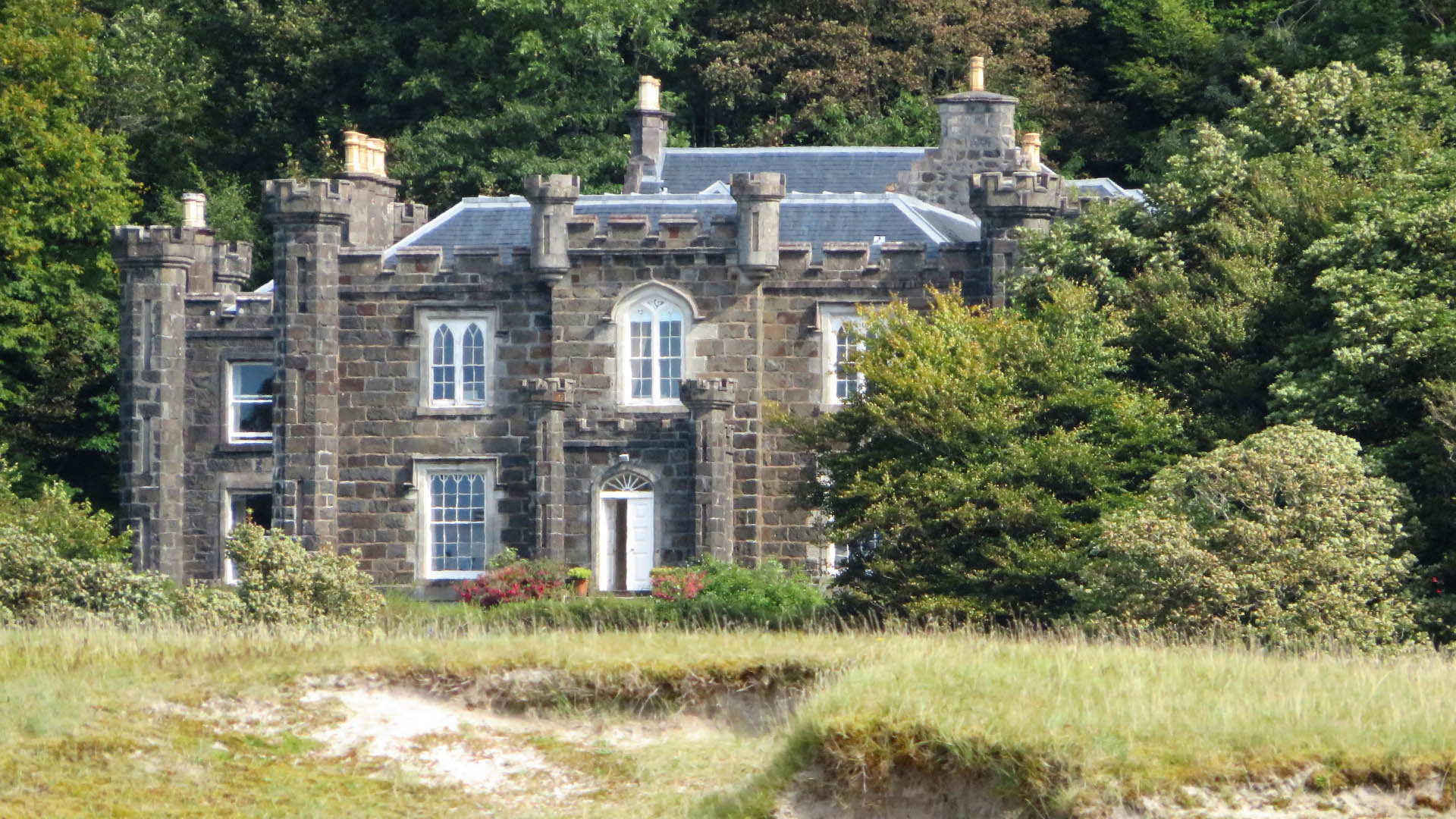
Calgary House by Andrew Wood, CC BY-SA 2.0, via Wikimedia Commons
Calgary Castle
Located near Calgary Bay on the northwest coast, Calgary Castle is a 19th-century Gothic revival residence surrounded by wildflower meadows and coastal heath. Originally built for Captain James Glassford in the 1820s, it presents a picturesque façade of battlements and turrets in keeping with Victorian romanticism.
The castle itself remains privately occupied, but nearby walking trails provide scenic glimpses of its architecture. Vantage points reveal Calgary’s shoreline stretching toward the Outer Hebrides, making the castle a fitting conclusion to any Mull castle journey.

